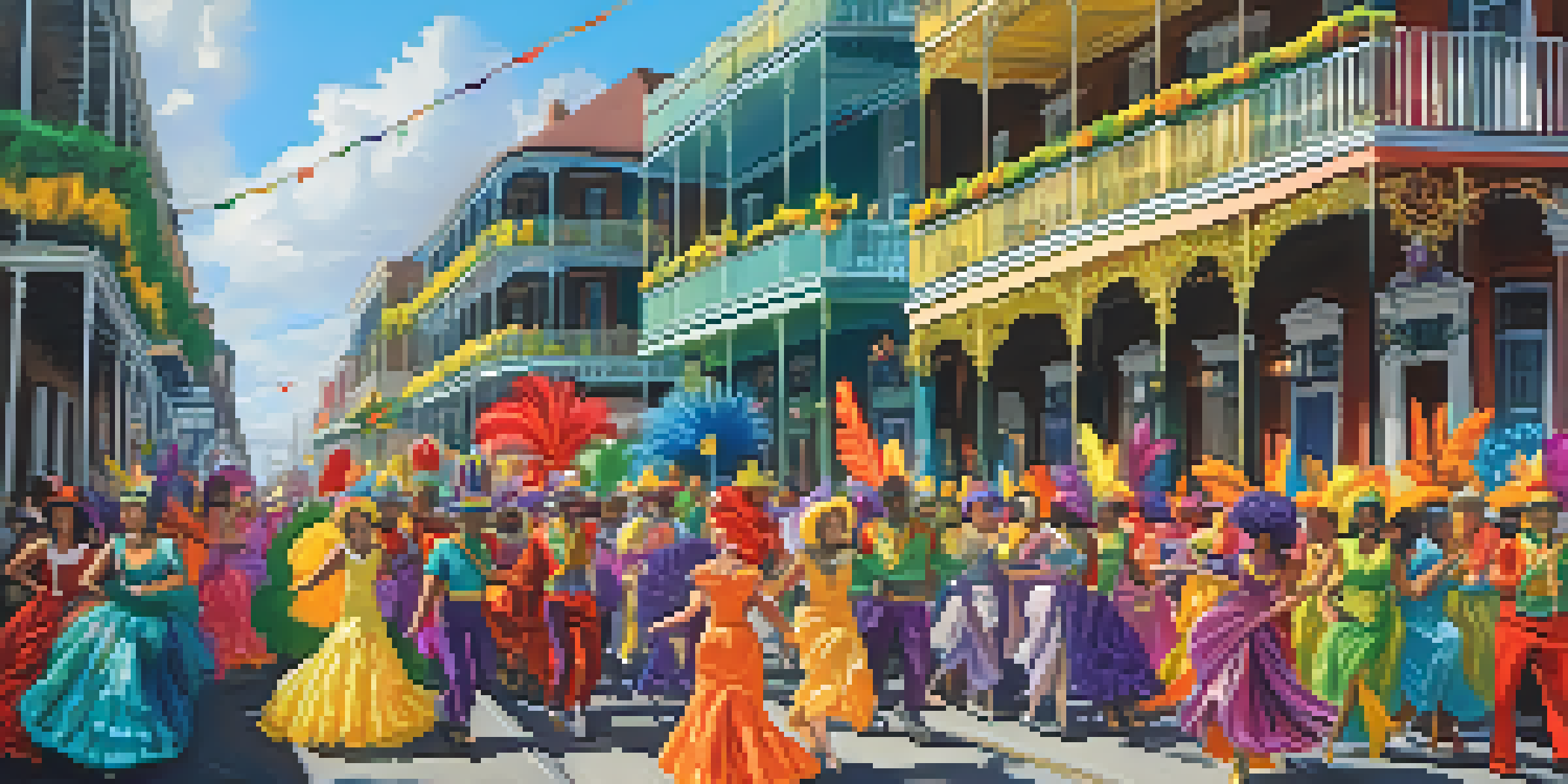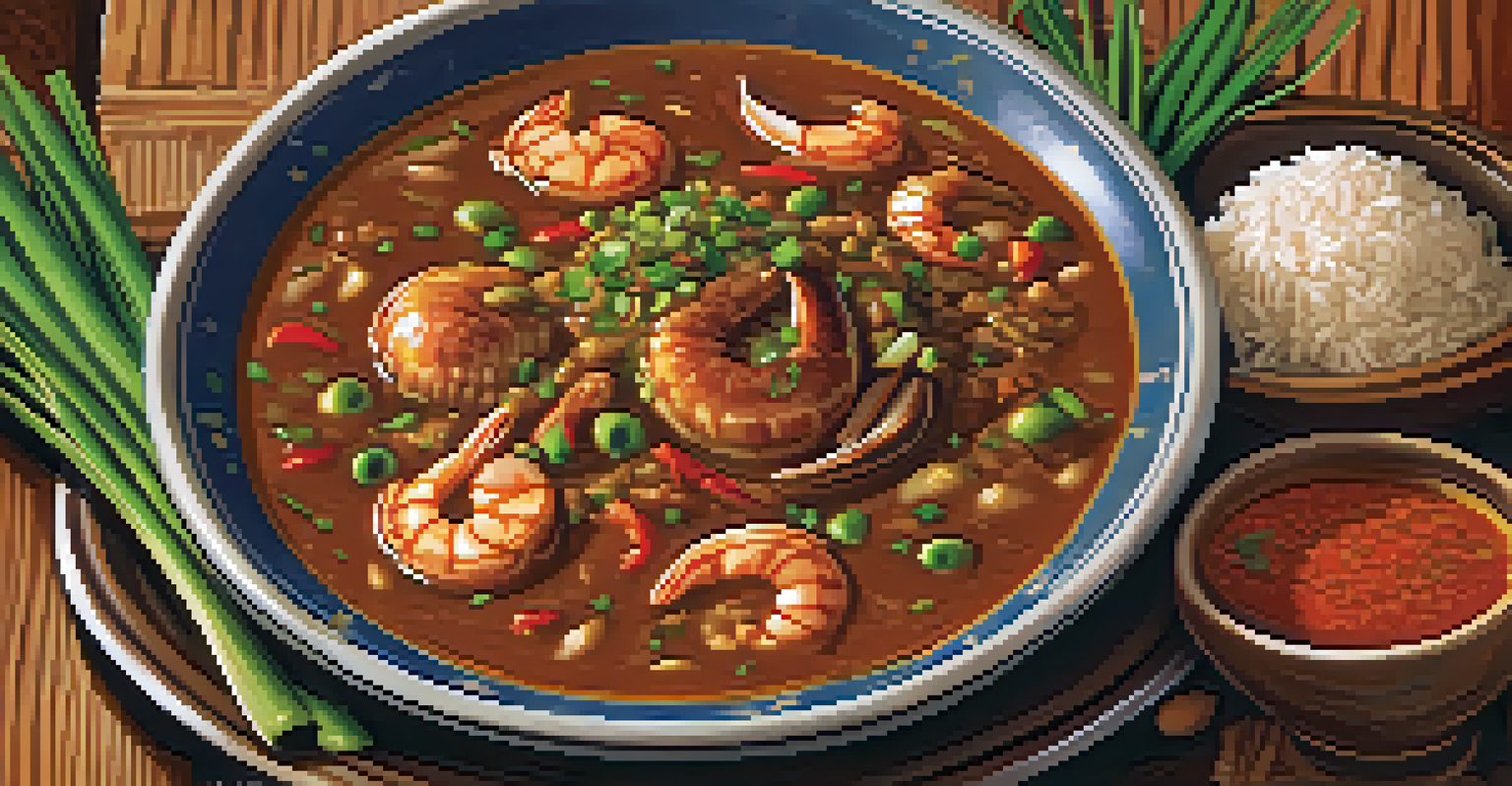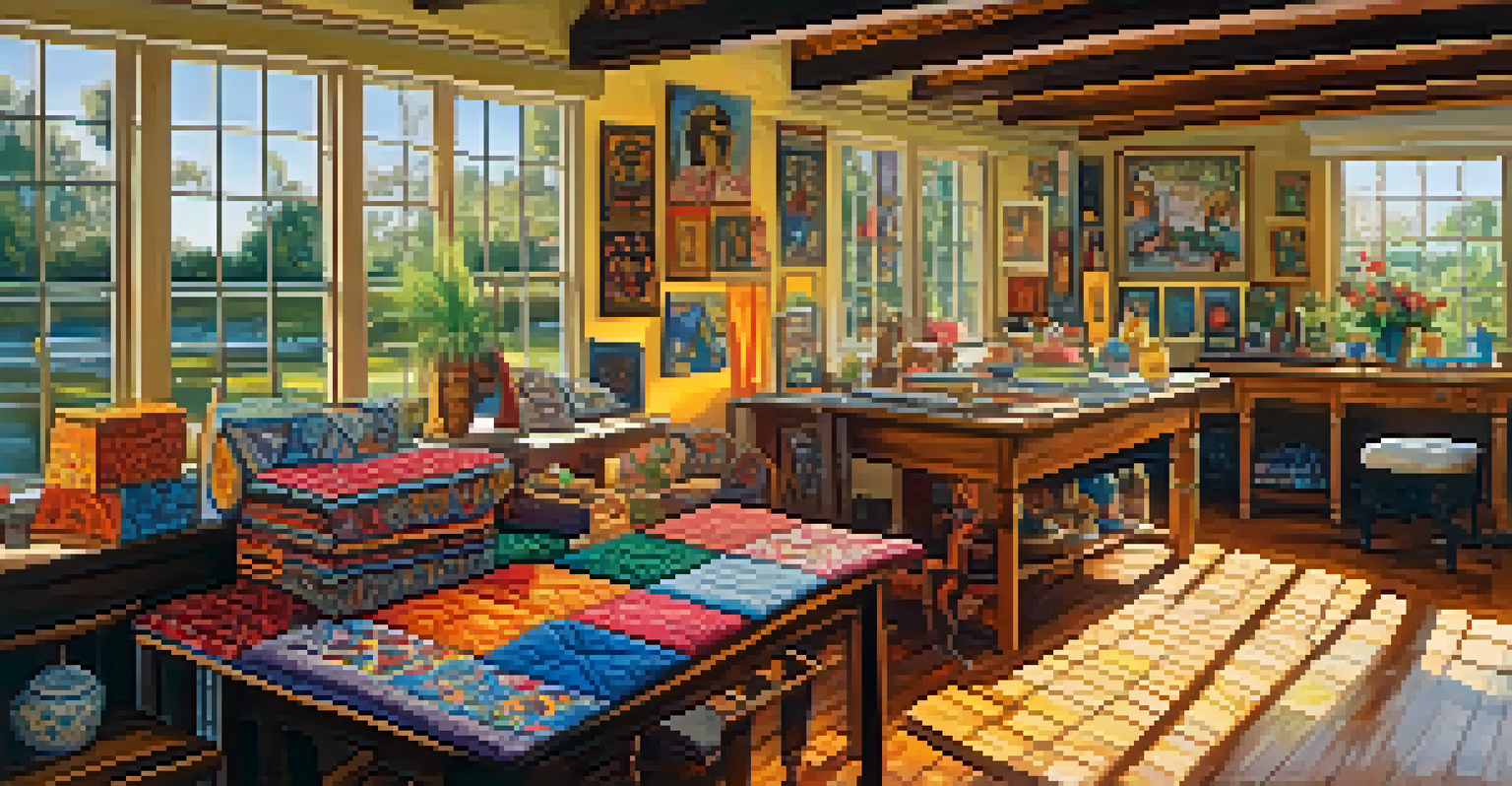The Creole Culture: A Blend of Influences in Louisiana

Understanding Creole Culture: An Overview
Creole culture is a unique blend of various traditions and influences, primarily found in Louisiana. It encompasses a rich tapestry of French, Spanish, African, and Native American elements that come together to create a distinct identity. This cultural fusion is reflected in the language, music, cuisine, and festivals that characterize the region.
Culture is the widening of the mind and of the spirit.
The term 'Creole' historically referred to people born in the colonies, but it has evolved to signify a broader cultural heritage. Louisiana's Creole community celebrates its diverse roots through vibrant expressions of art, storytelling, and communal activities. Understanding this culture requires an appreciation for its historical context and the many layers that contribute to its richness.
From the bustling streets of New Orleans to the quiet bayous, Creole culture is alive and well. Its influence can be seen in everything from the architecture of homes to the sounds of jazz and zydeco music. By exploring Creole culture, we can gain insight into how history and identity intertwine in this vibrant part of the world.
Historical Roots: The Origins of Creole Culture
The roots of Creole culture can be traced back to the colonial era in Louisiana, with significant contributions from French and Spanish settlers. These early inhabitants brought their customs, languages, and beliefs, which laid the groundwork for what would eventually develop into a unique cultural identity. Over time, interactions with enslaved Africans and indigenous peoples further enriched this cultural tapestry.

In the 18th century, New Orleans became a melting pot, attracting immigrants from various backgrounds. The city's strategic location as a port allowed for the mixing of ideas, traditions, and cuisines from different cultures. This blending created a vibrant community that celebrated diversity, leading to the emergence of a distinctive Creole identity.
Creole Culture: A Rich Tapestry
Creole culture is a vibrant blend of French, Spanish, African, and Native American influences, shaping its unique identity in Louisiana.
As we delve into the historical roots of Creole culture, it becomes evident that resilience and adaptation played crucial roles. The community has faced challenges throughout history, yet it has managed to preserve and evolve its rich heritage. This journey reflects the spirit of those who have contributed to the cultural mosaic of Louisiana.
Language: The Heartbeat of Creole Identity
Language is a vital aspect of Creole culture, with Louisiana Creole (Kréyol La Lwizyàn) being one of the primary languages spoken. This French-based Creole language incorporates elements from African languages, Spanish, and Native American dialects, creating a unique linguistic expression. For many, speaking Creole is a way to connect with their heritage and community.
Food is our common ground, a universal experience.
In addition to Louisiana Creole, French remains a significant part of the cultural landscape. The revival of French language programs in schools and community organizations has sparked a renewed interest in preserving this linguistic heritage. This effort highlights the importance of language as a vessel for cultural transmission and identity.
The interplay of languages within Creole culture serves as a reminder of its diverse influences. Through storytelling, music, and everyday conversations, language continues to play a critical role in shaping the identity of the Creole community. It fosters a sense of belonging and pride, reinforcing the idea that language is not just a means of communication but a vital part of cultural expression.
Cuisine: A Flavorful Fusion of Cultures
Creole cuisine is a delicious reflection of the cultural blending that defines Louisiana. It combines French, Spanish, African, and Native American cooking techniques and ingredients, resulting in dishes that are rich in flavor and history. Popular dishes like gumbo, jambalaya, and étouffée showcase this culinary diversity, drawing food lovers from around the world.
The use of local ingredients like seafood, rice, and spices adds to the uniqueness of Creole cooking. Family recipes passed down through generations often feature prominently in Creole kitchens, emphasizing the importance of tradition and community. Cooking is not just about nourishment; it's an opportunity to gather, share stories, and celebrate cultural heritage.
Cuisine Reflects Cultural Fusion
Creole cuisine showcases a delicious mix of culinary traditions, with dishes like gumbo and jambalaya highlighting the region's diverse heritage.
In many ways, Creole cuisine is a metaphor for the culture itself—a dynamic mixture of influences that come together to create something extraordinary. Each bite tells a story of resilience, creativity, and adaptation, reminding us of the rich history that flavors every dish. Exploring Creole food allows us to taste the essence of Louisiana's cultural narrative.
Music: The Soul of Creole Culture
Music is an integral part of Creole culture, with genres like zydeco and jazz reflecting its diverse influences. Zydeco, rooted in African and Creole traditions, is characterized by its lively rhythms and use of instruments like the accordion and washboard. This infectious music brings communities together, often accompanying dance and celebration.
Jazz, which originated in New Orleans, also plays a significant role in the Creole cultural landscape. Its improvisational nature allows for individual expression while honoring collective traditions. The sound of jazz, with its blend of African rhythms and European harmonies, embodies the spirit of cultural fusion that defines Creole identity.
Through music, Creole culture communicates emotions, stories, and history in ways that words alone cannot. Festivals and gatherings often showcase local musicians, providing a platform for cultural expression and preservation. As we listen to the vibrant melodies of Creole music, we are reminded that it is not just entertainment; it's a celebration of life and heritage.
Festivals: Celebrating Creole Heritage and Community
Festivals are an essential part of Creole culture, serving as vibrant celebrations of heritage and community. Events like Mardi Gras and the New Orleans Jazz & Heritage Festival showcase the rich traditions and artistic expressions of the Creole community. These festivals not only preserve cultural practices but also invite people from all backgrounds to partake in the festivities.
During Mardi Gras, the streets come alive with colorful parades, music, and food, reflecting the exuberance of Creole culture. Participants don elaborate costumes and masks, symbolizing the freedom of expression and creativity inherent in these celebrations. It’s a time for bonding and revelry, where the community comes together to honor its roots.
Music as Cultural Expression
Music, including zydeco and jazz, serves as a vital means of celebrating and preserving Creole identity and community spirit.
The New Orleans Jazz & Heritage Festival further emphasizes the connection between music, food, and Creole culture. Attendees enjoy performances by local musicians while indulging in traditional dishes, creating a sensory experience that captures the essence of Louisiana. Festivals like these are more than just events; they are a testament to the resilience and vibrancy of Creole culture.
Art and Craftsmanship: A Reflection of Creole Identity
Art and craftsmanship play a significant role in expressing Creole identity, with many artists drawing inspiration from their cultural heritage. Traditional crafts such as basket weaving, pottery, and quilting reflect the skills passed down through generations. These art forms not only preserve history but also serve as a means of storytelling and cultural expression.
The vibrant colors and intricate designs found in Creole art often depict scenes from daily life, nature, and folklore. Artists like George Rodrigue, known for his Blue Dog paintings, have brought attention to Louisiana's artistic traditions while infusing contemporary themes. This blending of old and new illustrates how Creole culture continues to evolve while honoring its roots.

Local galleries and craft fairs often showcase the work of Creole artists, providing a platform for cultural exchange and community engagement. Through their creations, artists celebrate their heritage and invite others to appreciate the beauty of Creole culture. This artistic expression reinforces the idea that creativity is a powerful tool for connection and understanding.